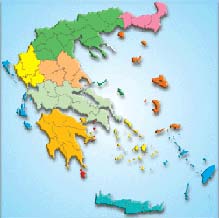
Please click on the map,
the region you want to visit |
|
|
|
|
| |
|
 |
Tourist guide of Keros, Schinousa |
|
Keros
Keros is an islet west of Amorgos with particular archaeological interest. In antiquity, the island was called Kereia or Keria, and the first mention of its name was made in 425 BC, in an inscription with the names of taxpayer allies of Athenian democracy. Mountainous, barren, without drinking water and without easy access, Keros has as main mineral the white fine marble. Its surface area is estimated at 15.2 km and has a coastline of 27 km.
During the Middle Ages, Keros was used as a base for pirates and in recent years, until 1952, it belonged to the abbey of Chozoviotissa of Amorgos and subsequently came under the property of Agricultural Association. Parts of its area are auctioned as cattle-raising legacy to the shepherds. Today it belongs to Amorgos and has been declared as an archaeological site.
In Keros, in the area of Kavos Daskalio, a number of archaeological finds have been identified, dating from the Cycladic civilization, among them several Cycladic figurines, making the researchers to speculate that the island was a worship center during the Cycladic era, similar to the Sanctuary of Apollo at Delos in the Classical period.
On the opposite islet of Daskalio, an extensive fortified settlement of the same era has been identified. Because of its cultural wealth, it has been repeatedly looted in the past by illegal antiquities' excavators. From there comes the so-called "Treasure of Keros," formerly in the collection of Erlenmager and today its bigger part is at the Museum of Cycladic Art. Systematic excavations were conducted by the Archaeological Associations in 1963, 1967.
The findings from Keros are exhibited at the Museum of Naxos.
Keros is now uninhabited.
Schinoussa
The island administratively belongs to Cyclades islands. It has an area of 9 square kilometers and a permanent population of approximately 250 residents.
The name Schinoussa is found in documents of Chozoviotissa monastery of Amorgos, of the fifteenth century. On old nautical maps of the eighteenth century, which are in the Navy Museum of Hydra, the island is mentioned as S. Quinoze, a Venetian military commander's name.
In many printed matters is referred as Echinoussa.
|
|
|